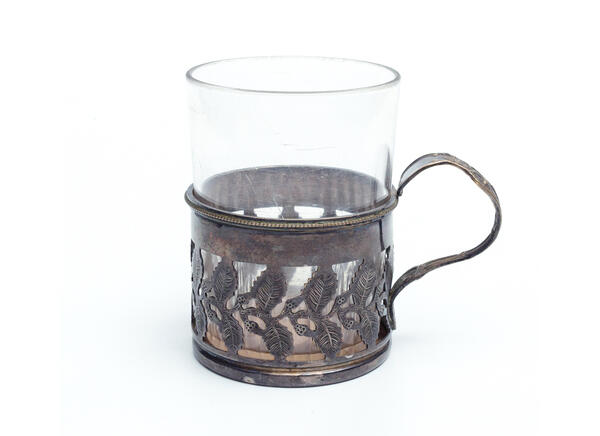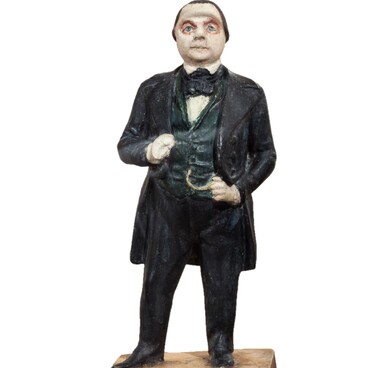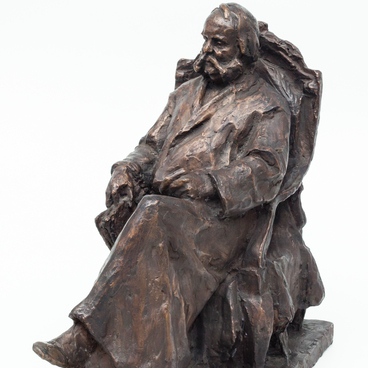Tea was Ivan Goncharov’s favorite drink. He was a great tea connoisseur and knew all about its varieties and drinking traditions, including those outside Russia as well. In his book called “Frigate “Pallada”, Goncharov described the tea in England,
Ivan Goncharov’s glass holder with a glass
Creation period
the second half of the 19th century
Place of сreation
Russia
Dimensions
10,5x8x8,5 cm
Technique
white metal, glass
Collection
Exhibition
0
Open in app#4
Ivan Goncharov’s glass holder with a glass
#6
#7
We call a tea good if it is refined and has the odor of flowers. Not every nose and tongue is sensitive enough to appreciate the aroma of this tea: it is too subtle. What the English call good tea or simply tea (it is all the same to them) is a particular kind of coarse black tea mixed with green tea, a blend <…> with a very strong taste, a tea that stings your tongue and your palate like almost everything the English eat and drink. They like their food to be a scrubbing brush that combs your throat. And they require their tea to be like their Indian sauces and peppers, that is, some sort of poison.
#2
Goncharov preferred to drink his tea from a glass in a metal podstakannik (glass-holder) with a wooden base. The collection of the Ulyanovsk Museum of Local History houses one of such containers.
Some say that glass holders first appeared in Russia during the reign of Peter I. The etiquette of that time allowed only ladies to drink tea from porcelain cups — gentlemen were obliged to use a glass. This led to the danger of getting a hand burn, so glass holders were designed to avoid that. Holders made of metal also served as a means of lowering excessive heat thus saving glass from cracking.
In the 19th century, the town of Kolchugino organized the production of glass holders, which would become the integral feature of Russian trains starting from 1892. Sergey Witte, the Minister of Ways and Communications of Imperial Russia, introduced podstakanniks as a compulsory tableware item due to constant complaints coming from railroad workers stating that it was uncomfortable to bring hot tea in glasses to passengers. They turned out to be useful in preventing hand burns and were much more stable than just glasses.
Modern podstakanniks are made of copper, melchior, brass and silver. They are stamped with engravings and embossed patterns showing ornaments, inscriptions and logos, as well as sights of various Russian cities.
Some say that glass holders first appeared in Russia during the reign of Peter I. The etiquette of that time allowed only ladies to drink tea from porcelain cups — gentlemen were obliged to use a glass. This led to the danger of getting a hand burn, so glass holders were designed to avoid that. Holders made of metal also served as a means of lowering excessive heat thus saving glass from cracking.
In the 19th century, the town of Kolchugino organized the production of glass holders, which would become the integral feature of Russian trains starting from 1892. Sergey Witte, the Minister of Ways and Communications of Imperial Russia, introduced podstakanniks as a compulsory tableware item due to constant complaints coming from railroad workers stating that it was uncomfortable to bring hot tea in glasses to passengers. They turned out to be useful in preventing hand burns and were much more stable than just glasses.
Modern podstakanniks are made of copper, melchior, brass and silver. They are stamped with engravings and embossed patterns showing ornaments, inscriptions and logos, as well as sights of various Russian cities.
#5
Ministry of Culture of the Russian Federation
read morehide
00:00
00:00
1x
Ivan Goncharov’s glass holder with a glass
Creation period
the second half of the 19th century
Place of сreation
Russia
Dimensions
10,5x8x8,5 cm
Technique
white metal, glass
Collection
Exhibition
0
Open in app
Share



